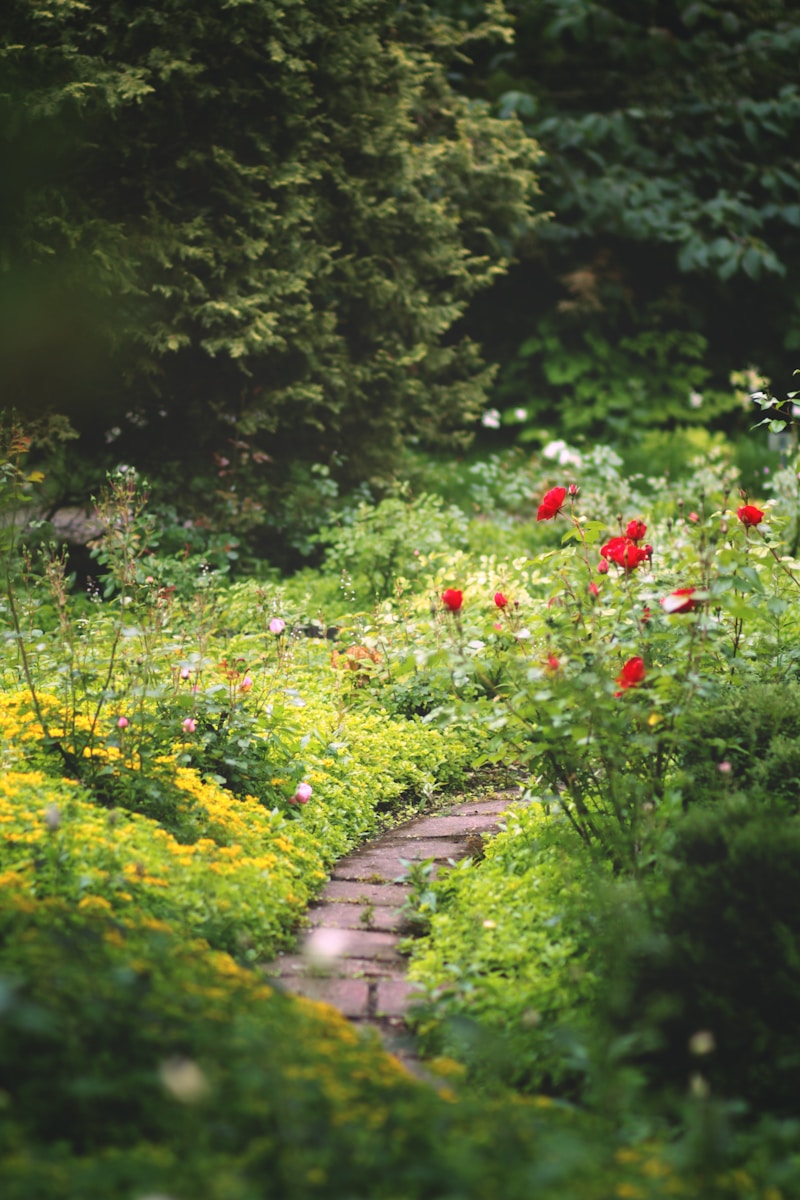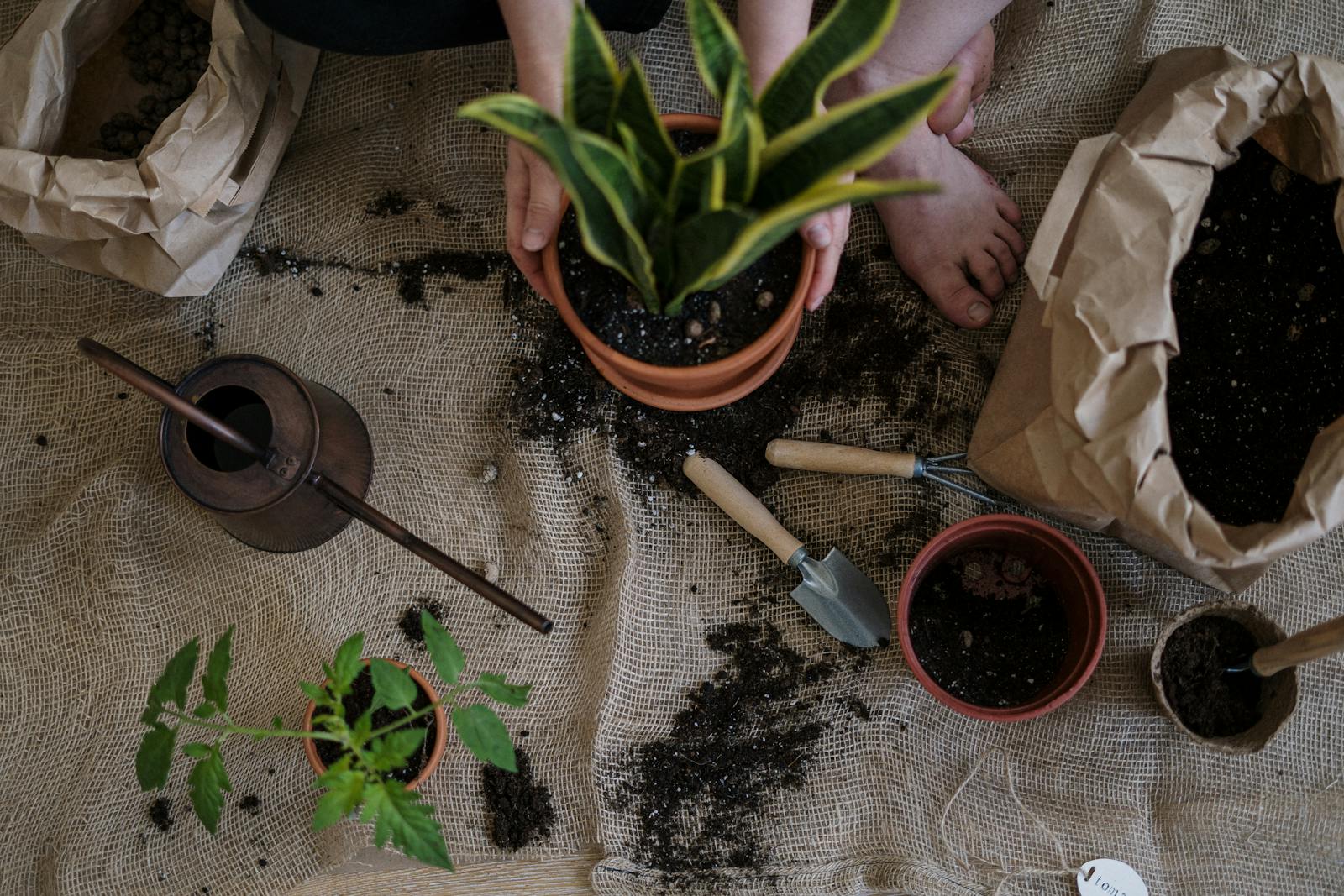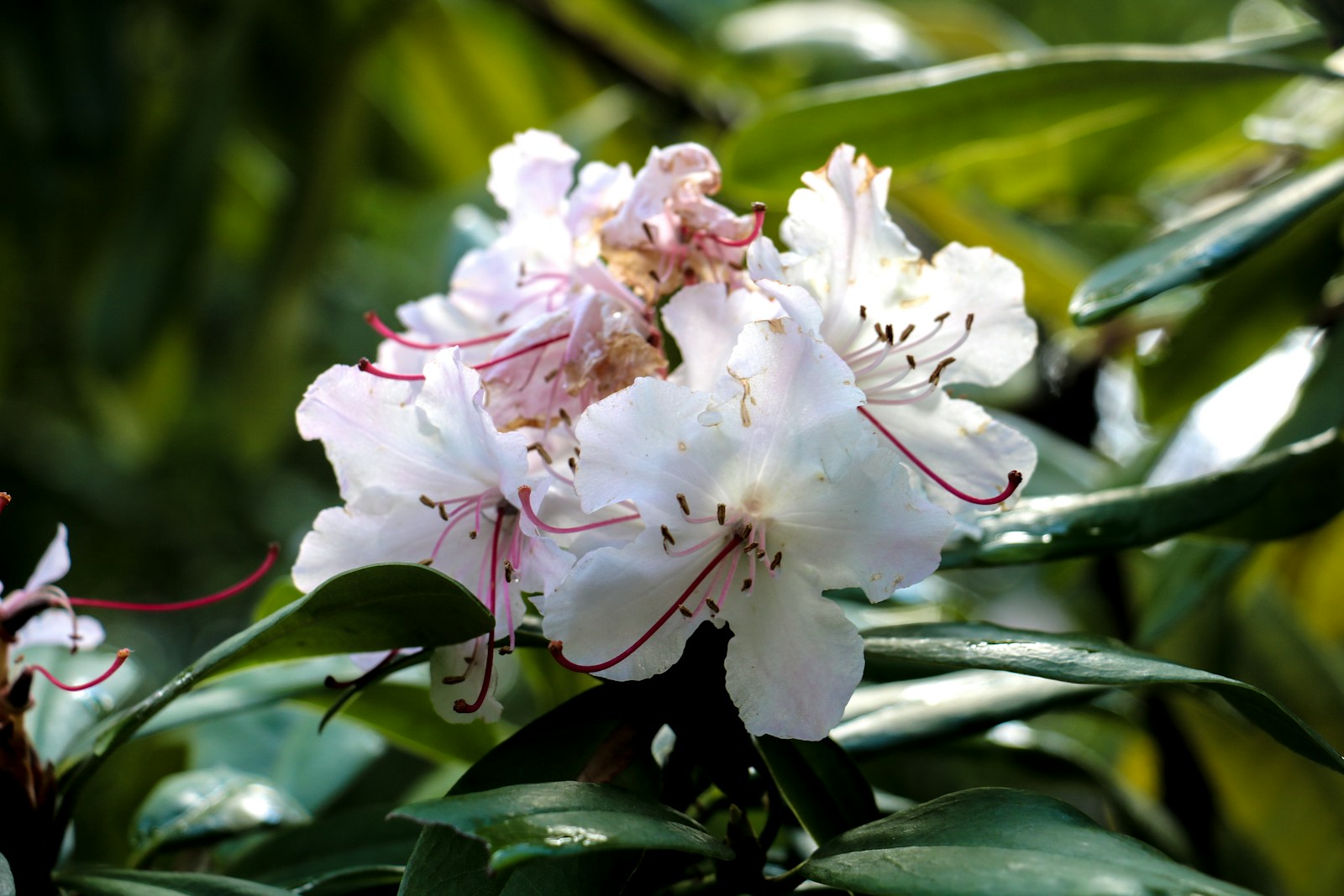Global Gardening Trends: What’s Growing in 2025?
Sustainable Gardening Takes Center Stage
Among the leading gardening trends of 2025, sustainability remains a top priority. More gardeners are embracing organic methods, zero-waste practices, and closed-loop systems. Composting, rainwater harvesting, and soil regeneration have become standard techniques for reducing environmental impact.
Gardeners are also turning to native and drought-resistant plants to conserve water and promote biodiversity. Sustainable gardening not only helps the planet but also creates healthier, more resilient ecosystems at home. As climate change awareness grows, eco-conscious gardening is no longer a niche—it’s the new norm.
Vertical Gardening Goes Mainstream
With space at a premium in urban areas, vertical gardening is becoming a defining feature of modern landscape design. From living walls to tiered planters, gardeners are growing up—not out. These vertical systems maximize growing space while offering aesthetic and environmental benefits.
In 2025, we see a rise in modular vertical planters, hydroponic towers, and green facades on buildings. Vertical gardens are not only efficient but also visually stunning, making them one of the most practical gardening trends for city dwellers and small-space enthusiasts alike.
Smart Technology Enters the Garden
The smart home revolution has now extended outdoors. One of the most exciting gardening trends in 2025 is the integration of technology. Gardeners are using app-controlled irrigation systems, climate sensors, and AI-powered garden assistants to monitor and manage plant health.
Automated systems reduce guesswork and improve water and nutrient efficiency. Solar-powered sensors can track soil moisture, sunlight levels, and temperature in real time. These innovations make gardening more accessible, especially for beginners and busy urbanites looking to optimize their green spaces with minimal effort.
Edible Landscaping Blends Beauty and Function
Edible landscaping continues to gain momentum as gardeners look to blend functionality with aesthetics. In 2025, fruits, vegetables, and herbs are integrated into ornamental beds, borders, and containers—turning the entire garden into a productive landscape.
Colorful lettuces, rainbow chard, dwarf fruit trees, and cascading strawberries serve as both food and design elements. This trend reflects a growing interest in self-sufficiency, especially in the face of rising food costs. Edible gardening also connects people more deeply with their food sources, promoting health and sustainability.
Gardens for Pollinators and Biodiversity
Protecting pollinators has become a core part of 2025’s gardening trends. Gardeners worldwide are planting with purpose—choosing species that support bees, butterflies, hummingbirds, and beneficial insects. Native plants, nectar-rich flowers, and layered habitat zones are key elements.
Designs now include wildflower patches, insect hotels, and even dedicated bee lawns. This trend reflects a broader ecological consciousness, aiming to restore balance in local ecosystems. Creating pollinator-friendly gardens supports food production and biodiversity, making it a vital part of global gardening efforts.
Climate-Resilient Gardening Strategies
One of the most influential gardening trends of 2025 is climate-resilient design. With extreme weather events becoming more common, gardeners are adapting by choosing hardier plant varieties and rethinking layouts for drainage, wind protection, and heat tolerance.
Permeable paving, rain gardens, swales, and mulching techniques are being used to mitigate water runoff and improve soil stability. Shade structures and windbreaks help protect plants from sudden environmental shifts. This trend emphasizes adaptability, enabling gardeners to create landscapes that survive and thrive despite changing climate conditions.
Biophilic Design Integrates Indoors and Out
Biophilic design, which connects people with nature through architectural and landscape choices, continues to influence gardening trends in 2025. Outdoor spaces are designed to flow seamlessly from interior living areas, using similar materials, colors, and layouts for a unified experience.
Naturalistic elements like water features, green walls, and sensory plantings enhance emotional well-being and reduce stress. Homeowners are investing in patios, garden rooms, and edible borders that function as extensions of indoor living. The biophilic approach turns gardens into personal wellness retreats that blur the line between home and habitat.
Regenerative Gardening Goes Global
While sustainability focuses on maintaining balance, regenerative gardening takes it further by actively improving soil, biodiversity, and carbon capture. In 2025, more gardeners are adopting this holistic approach to not just minimize harm—but restore ecosystems.
Techniques include no-dig gardening, composting, green manure crops, and companion planting. Regenerative practices aim to support microbial life in the soil, increase organic matter, and sequester carbon. These forward-thinking methods offer a powerful response to environmental challenges, making regenerative gardening one of the most vital trends shaping the future of gardening worldwide.
Gardening for Mental Health and Mindfulness
In response to rising mental health awareness, many are turning to their gardens as sanctuaries. In 2025, gardens are increasingly designed as therapeutic spaces. Calming color palettes, aromatic herbs, soft textures, and sensory elements are central to this movement.
Whether through meditation paths, labyrinths, or healing herb beds, gardeners are using their spaces to decompress and reconnect. This wellness-focused trend has inspired the creation of mental health gardens in homes, schools, hospitals, and community centers—reflecting the growing recognition of gardening as a form of self-care and emotional resilience.
DIY Gardening and Community Skill-Sharing
Another strong gardening trend of 2025 is the rise of hands-on, community-driven learning. People are embracing DIY methods for raised beds, compost bins, irrigation systems, and upcycled garden art. Online tutorials, local workshops, and urban gardening collectives are empowering new gardeners.
This grassroots movement promotes resourcefulness and accessibility while fostering social connection. Community seed swaps, tool libraries, and public planting events make gardening a shared experience. The trend celebrates creativity, learning by doing, and rebuilding a sense of community through the joy of growing together.
Native Plant Landscaping Gains Popularity
Native plant landscaping has become one of the most widely adopted gardening trends in 2025. Gardeners are prioritizing local flora to support regional biodiversity, reduce maintenance, and improve environmental harmony. These plants are naturally suited to local climate, pests, and soil, requiring fewer resources.
Landscapes rich in native species attract pollinators, stabilize soil, and maintain ecosystem balance. Educational initiatives and native plant nurseries have surged in popularity, empowering more gardeners to design sustainable and ecologically beneficial spaces that reflect their local environment.
Food Forests and Agroforestry at Home
Inspired by permaculture and regenerative principles, food forests are becoming mainstream in residential and community gardens. These layered plant systems mimic natural forests, using fruit trees, shrubs, herbs, and ground covers to create abundant, self-sustaining ecosystems.
In 2025, homeowners are experimenting with mini agroforestry plots, combining nut trees, nitrogen-fixing plants, and perennial vegetables for long-term productivity. These gardens require less input over time and offer diverse yields. As part of broader gardening trends, food forests reflect a shift toward sustainable, year-round growing systems that serve both people and the planet.
Water-Wise Gardening Techniques Expand
With water scarcity affecting many regions, water-wise gardening continues to be a top priority. Xeriscaping—landscaping with drought-tolerant plants—is expanding globally. In 2025, smart irrigation, moisture-retaining soil amendments, and rain garden installations are common features in both residential and commercial landscapes.
Succulents, native grasses, and deep-rooted perennials dominate modern designs. Mulching, hydrozoning, and efficient watering tools help minimize waste. These techniques not only preserve water but also reduce maintenance and costs—making them key components of contemporary gardening trends across climates.
Color-Driven Garden Design
Color psychology is influencing garden design more than ever in 2025. Gardeners are curating beds and containers based on emotional impact and aesthetic preferences. Calming blues and silvers, energizing reds and oranges, and harmonious monochromatic palettes shape the visual mood of outdoor spaces.
This trend extends to hardscaping, containers, and furniture—creating immersive, intentional environments. Color themes are used to reflect personal style, cultural traditions, or seasonal energy. As part of the broader gardening trends of personalization and mindfulness, color is being harnessed as a powerful design tool.
Global Garden Inspiration Goes Digital
Digital platforms are fueling cross-cultural gardening innovation. In 2025, gardeners are drawing inspiration from around the world via social media, virtual tours, and immersive apps. From Moroccan courtyards to Japanese Zen spaces, cultural traditions are being reinterpreted and blended into local landscapes.
Digital gardening journals, augmented reality design tools, and AI-driven plant care apps are helping gardeners learn and experiment with confidence. This interconnectedness is shaping a new wave of design that celebrates diversity, creativity, and shared global knowledge.
Frequently Asked Questions
What are the top gardening trends in 2025?
The top gardening trends in 2025 include sustainable gardening practices, vertical gardening in urban spaces, smart garden technology, edible landscaping, and pollinator-friendly designs. Regenerative gardening and climate-resilient strategies are also gaining traction. Gardeners are increasingly focusing on biodiversity, water conservation, and creating therapeutic outdoor spaces. These trends reflect a global shift toward environmental responsibility, self-sufficiency, and personal wellness. Technology integration and cultural inspiration are also key drivers shaping how gardens are designed, managed, and enjoyed this year.
How is technology influencing modern gardening?
Technology is revolutionizing gardening through smart irrigation systems, soil sensors, and AI-powered plant care tools. In 2025, gardeners are using apps to monitor sunlight, temperature, and soil moisture in real-time. Automated systems help conserve water and improve efficiency, especially in urban or indoor setups. Augmented reality tools allow for garden design previews, while social platforms enable global inspiration and learning. Technology is making gardening more accessible, data-driven, and tailored to individual environments, aligning with the latest gardening trends focused on innovation and sustainability.
Why is vertical gardening popular in 2025?
Vertical gardening is trending in 2025 due to rising urbanization and limited outdoor space. This technique maximizes growing area by stacking plants on walls, trellises, and towers. It’s ideal for balconies, patios, and small yards. Vertical systems improve air circulation, reduce pests, and create visual interest. New designs are modular and eco-friendly, using recycled materials or integrated irrigation. As part of broader gardening trends, vertical gardens offer sustainable, efficient solutions that fit modern lifestyles while enhancing food production and aesthetics.
What is regenerative gardening and why is it important?
Regenerative gardening focuses on improving soil health, biodiversity, and carbon capture through natural techniques. Unlike traditional methods that aim to maintain, regenerative practices seek to restore and enhance ecosystems. Key methods include composting, no-dig beds, cover cropping, and companion planting. In 2025, this approach is growing globally as gardeners recognize its power to fight climate change, reduce reliance on chemicals, and increase resilience. Regenerative gardening aligns with eco-conscious trends, making it one of the most impactful gardening movements of the decade.
How are cultural influences shaping gardens in 2025?
Global gardening trends in 2025 are heavily inspired by cultural traditions. Gardeners are drawing from Japanese Zen design, Moroccan courtyards, Indigenous permaculture, and European potagers to create diverse, meaningful landscapes. This fusion reflects a desire to connect with heritage and explore new aesthetics. Social media and virtual tools make it easy to learn about and incorporate techniques from around the world. The result is gardens that are not only functional and sustainable but also rich in symbolism and cultural storytelling.
© 2025 GardeningandDecor.com. All rights reserved.



